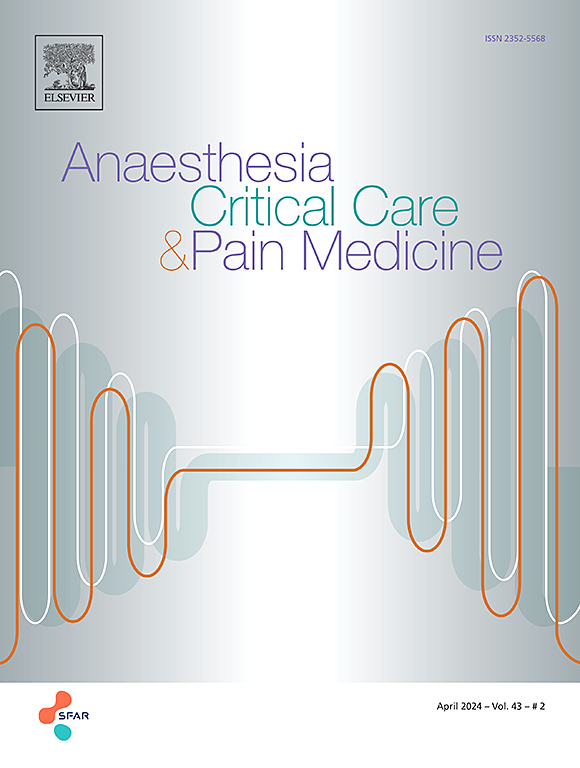目的采用CompuFlo®设备进行硬膜外压力实时测量,这是一项单中心观察研究。
IF 4.7
3区 医学
Q1 ANESTHESIOLOGY
引用次数: 0
摘要
背景:硬膜外麻醉(EA)是特别相关的情况下预期的强烈和持久的术后疼痛。然而,这项技术在幼儿中被认为是具有挑战性的,因为难以感知检测硬膜外腔所需的阻力损失(LOR)。CompuFlo®设备是一种计算机化的注射泵,可准确检测针尖的实时压力。这项前瞻性观察性研究旨在描述儿童EA期间的压力水平。因此,我们假设小孩的压力会更低。方法:所有需要EA的手术患者均符合纳入条件。在此过程中,使用CompuFlo®设备的两种模式(手动和自动)实时测量LOR前的压力。研究人员还调查了体重等可能影响压力水平的因素。结果:我们分析了47例患者的56例手术中LOR前的最后压力。中位压力(四分位数)为174 (120;314毫米汞柱)。LOR前压力与体重相关(自动组r = 0.61), 5 kg以下儿童的压力值明显低于其他体重组(p = 0.02)。结论:CompuFlo®设备允许在儿童EA导管置入期间获得LOR之前进行压力测量。年龄较小的孩子似乎血压水平较低。这可以部分解释婴儿在检测硬膜外腔时的困难。这项观察性研究描述了可以作为未来假设基础的初步结果。注册:ClinicalTrial.gov, NCT03672526。本文章由计算机程序翻译,如有差异,请以英文原文为准。
Objective real-time epidural pressure measurement using the CompuFlo® device, a mono-center observational study
Background
Epidural anesthesia (EA) is particularly relevant in the cases of expected intense and lasting postoperative pain. Yet, this technique is considered challenging in young children because of the difficulty in perceiving the loss of resistance (LOR) required to detect the epidural space. The CompuFlo® device is a computerized injection pump that accurately detects real-time pressure at the tip of a needle. This prospective observational study aimed to describe pressure levels during EA in children. Therefore, we hypothesized that pressures would be lower in smaller children.
Methods
All surgical patients requiring an EA were eligible for inclusion. During the procedure, pressures before LOR were measured in real-time using both modes (manual and automatic) of the CompuFlo® device. Factors that may influence pressure levels, such as weight, were also investigated.
Results
We analyzed the last pressures just before LOR during 56 procedures performed on 47 patients. Median pressures (quartiles) were 174 (120; 314) mmHg. The pressure before LOR was correlated to the weight (r = 0.61 in the automatic group), with values significantly lower in the group of children under 5 kg (p = 0.02) compared to the other weight groups.
Conclusion
The CompuFlo® device allowed a pressure measurement prior to obtaining LOR during EA catheter placement in children. Younger children appear to have lower pressure levels. This could partly explain the difficulty in detecting the epidural space in infants. This observational study describes initial results that could be used as a basis for future hypotheses.
Registration
ClinicalTrial.gov, NCT03672526.
求助全文
通过发布文献求助,成功后即可免费获取论文全文。
去求助
来源期刊

Anaesthesia Critical Care & Pain Medicine
ANESTHESIOLOGY-
CiteScore
6.70
自引率
5.50%
发文量
150
审稿时长
18 days
期刊介绍:
Anaesthesia, Critical Care & Pain Medicine (formerly Annales Françaises d''Anesthésie et de Réanimation) publishes in English the highest quality original material, both scientific and clinical, on all aspects of anaesthesia, critical care & pain medicine.
 求助内容:
求助内容: 应助结果提醒方式:
应助结果提醒方式:


